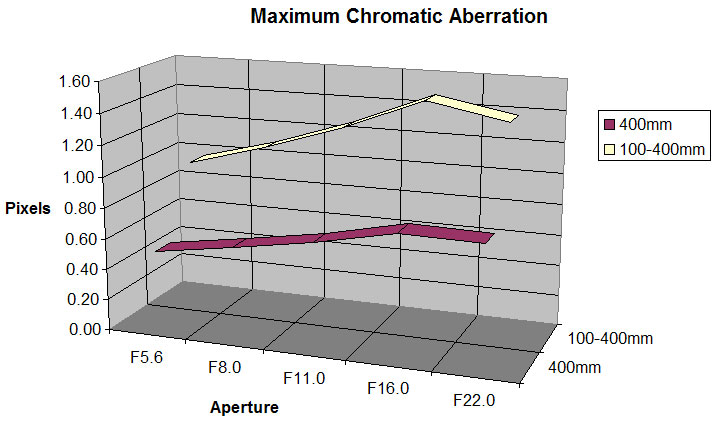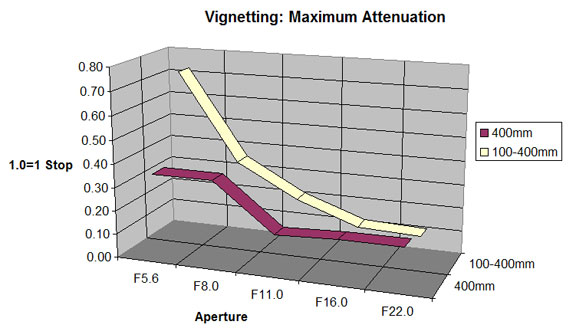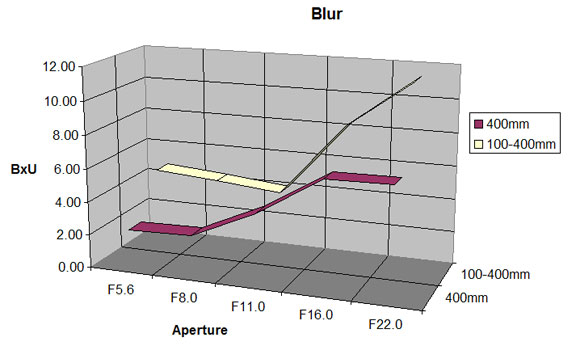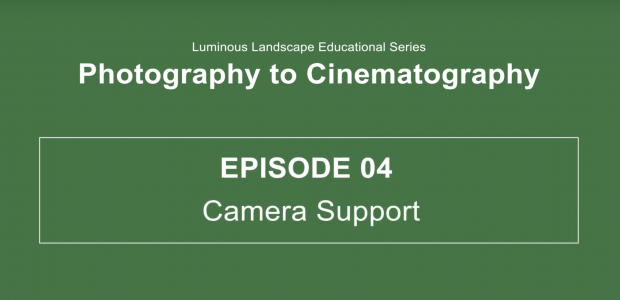
About 3 years ago I tested two different 400mm solution — theCanon 100-400 f/5.6LISzoom against the then brand newCanon 70-200mm f/2.8L with Canon 2X Extender. That report can be foundhere. Since then I have added theCanon 400mm f/5.6Lto my kit because neither of the two previous solutions offered me the image quality that I was looking for in a light-weight 400mm lens.
Recently I started testing some of my existing cameras and lenses withDxO Analyzer. Based on e-mails that I receive and the numerous questions that I see on various equipment Forums around the Net, one of the most common questions concerns what is the best moderately priced 400mm solution for Canon lens owners? This test is intended to partially answer that question, at least with regard to measurable optical performance.
This comparison of theCanon 100-400 f/5.6L ISvs. theCanon 400mm f/5.6Lwas conducted usingDxO Analyzer. If you are not familiar with this optical testing system please readthis tutorial. Without being familiar with how the tests are conducted, and how to read them, there’s not much point in proceeding.
To jump directly to the definition and tutorial for a specific test click on the DC, V, or B logos
Both lenses were tested on a Canon 1Ds at ISO 100

Observation
Chromatic Aberration isn’t a really serious issue with either of these lenses, though the 100-400mm measures quite a bit worse. It’s unlikely though that either lens will display visible CA in prints or onscreen images.
400mm 100-400mm F/5.6 0.35 0.73 F/8 0.35 0.36 F/11 0.15 0.22 F/16 0.16 0.13 F/22 0.16 0.12 Observation
Vignetting isn’t much of an issue with either lens, though the 100-400mm shows nearly three quarters of a stop wide open.
400mm 100-400mm F/5.6 2.18 4.83 F/8 2.27 4.53 F/11 4.03 4.14 F/16 6.42 8.51 F/22 6.49 11.38 Observation
The prime 400mm f/5.6L clearly is the winner here, as one might have expected, showing a 2 to 6 BxU advantage at every aperture except f11. Surprisingly F16 and f/22 really fall apart, likely because of diffraction effects. The 100-400mm lens starts to deteriorate earlier, above f/11.
The 400mm prime is clearly the lens to have (though obviously lacking the 100-400mm zoom’s versatility and Image Stabilization). It displays one of the hallmarks of the finest long lenses — superior performance when used wide-open. The only reason you ever want to stop down is for depth of field (not that you get much with a 400mm lens in any event).
Remember that +1 BxU is equal to oneBlur-Morefunction in Photoshop. To see for yourself what this represents in subjective sharpness difference, load any reasonably sharp image into Photoshop and then applyBlur More.So if two lenses are 2 BxU apart, you need to do it twice to evaluate that difference.
The Bottom Line
In every measure the Canon 400mm f/5.6L is the clear winner. This is a lens that can be used to produce high quality images wide-open, something the 100-400mm f/5.5L zoom at 400mm can’t do. It also costs less and weights less.
Now, if only the Canon 400mm f/5.6L had Image Stabilization!
Caution
Before drawing any conclusions based on this report, please be sure to read theDxO Analyzer Tutorial. Also, kindly read theCaveatssection of that tutorial as well as theFinal Word.
You May Also Enjoy...
EVOLVING YOUR PHOTOGRAPHY INTO CINEMATOGRAPHY. Episode 04 (of 5). – Camera Support
FacebookTweet The goal of this educational series is to provide inspiration on how you can successfully transition your photography into cinematography. Often, when photographers start
GC2-LB
Grand Canyon Photo Expedition Photos and text by Leroy Beal Leroy Beal was a member of the May 2002 Grand Canyon Workshop Expedition. This page






